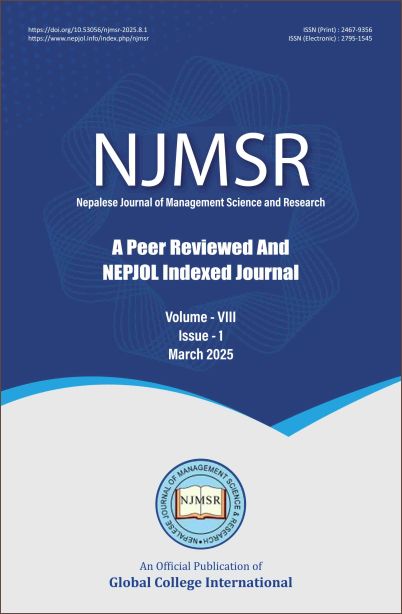A Study on The Influence of Role Conflict, Role Ambiguity, and Role Overload on The Prevalence of Job Stress among Female Employees in Nepalese Commercial Banks
Keywords:
Role conflict, Role ambiguity, Role overload, Job stressAbstract
In the context of Nepalese commercial banks, this study investigates the influence of role stressors on the work stress encountered by female workers. The main purpose of this study is to examine to what extent role conflict, role overload, and role ambiguity determine the level of job-related stress and strain experienced by female employees of Nepalese commercial banks. The sample size of this study consists of 270 female employees of Nepalese commercial banks, and participants have been limited to those who have worked for two years, specifically in managerial positions. Regarding research procedures, in this study, descriptive statistics, specifically multi-regression analysis, have been used for data analysis and to report the findings. The findings of this study indicate role overload, role conflict, and role ambiguity has positive and significant relationship with occupational stress experienced by female employees. This study, by analyzing occupation stress from the conceptual references of role stressors, enables executives, human resources managers, and supervisors in Nepalese commercial banks to gain insights into the variance in occupational stress explained by role overload, role conflict, and role ambiguity and develop policies, practices, job designs, and training programs that enable and empower female employees to prevent, cope with, or manage their occupational stress effectively.
Downloads
Downloads
Published
How to Cite
Issue
Section
License

This work is licensed under a Creative Commons Attribution-NonCommercial-NoDerivatives 4.0 International License.
This license enables reusers to copy and distribute the material in any medium or format in unadapted form only, for noncommercial purposes only, and only so long as attribution is given to the creator.

